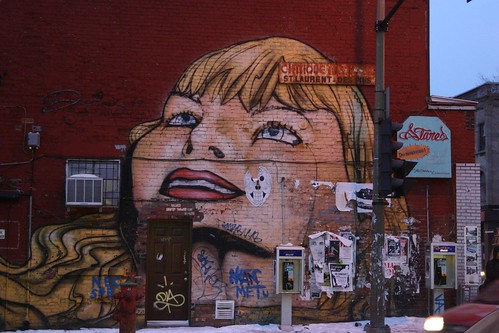
An unprecedented collaborative report mapping the concentration of artists in Canadian cities was released last month. The study was a result of the collective effort of the cultural departments of the cities of Montreal, Ottawa, Toronto, Calgary and Vancouver. Published by Hill Strategies, and based on data from the 2006 census, the report paints a fascinating picture into the make-up of Canada’s artistic and creative communities.
Each city has its own trends in the way its artistic and creative communities have located. Vancouver had the highest overall percent of artists at 2.3% but has its artistic community spread widely throughout the city. Toronto has by far the largest artistic community; it is home to one in six Canadian artists. Toronto has also seen its artistic neighbourhoods shift slightly since to 2001 to different areas of concentration. Montreal has perhaps the most densely located artistic community and is home to three of the country’s top five artistic employment postal codes. The Montreal neighbourhood of the H2T postal code (northward from avenue du Mont-Royal to avenue Van Horne between St-Denis and Jeanne-Mance) is the most artistic in Canada with artists accounting for 7.8% of its workers, ten times the national average. Ottawa and Calgary have artist concentrations closer to the national average, interestingly they also both have the largest income gaps between artists and the rest of the workforce and the largest percent of female artists. Maps of these trends are shown below.
Montreal’s artist neighbourhoods remain largely concentrated as an axis along rue St Denis with many established communities continuing to see their share of artists increase. Other areas of growth included the old port and Saint-Gabriel. Ottawa and Calgary have artist communities tightly located around their downtowns while Toronto and Vancouver have artistic areas concentrated around the periphery of their downtowns. In Toronto particularly, neighbourhoods of artistic concentration are located in pockets directly east and west of the downtown core.
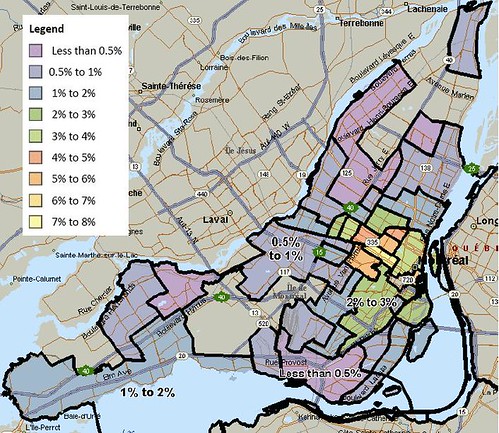
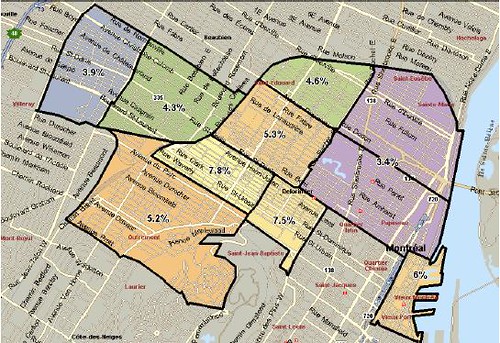
Maps showing artist concentrations in Montreal (top) and the ten highest concentrated artist neighbourhoods (below)
Montreal had the top two highest concentration areas of artists, both adjoining in the plateau neighbourhood. The Toronto neighbourhood of Parkdale was third, Old Montreal fourth, and the West Queen West area fifth. The north Annex neighbourhood fell from Toronto’s highest artist concentrated neighbourhood in 2001 to the city’s fourth most concentrated area; the sixth highest concentration in the country. The only neighbourhood in the top ten outside of Montreal or Toronto was Vancouver’s Grandview neighbourhood, centred around Commercial Dr, with an artist concentration of 5.1%.

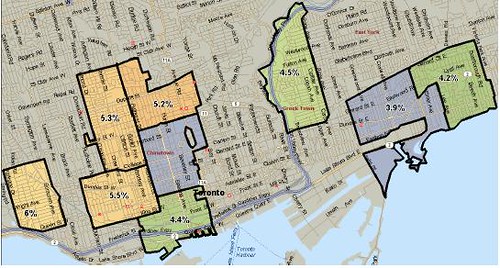
Toronto showing overall concentrations above and the 10 highest neighbourhoods below
The report makes clear that the creative sector of the Canadian workforce is largely found in the country’s major urban centres. The five cities mentioned account for 38% professional artists while representing only 21% of the total Canadian workforce. While the overall workforce is 0.8% composed of artists, the country’s larger cities consistently meet or exceed this. Also of note, artists in Montreal, Toronto and Vancouver have a much lower earnings gap between artists and the rest of the workforce, standing at around -36% as compared -52% nationally. Across the country no city experienced a significant change in artist concentration as a percent of its workforce.
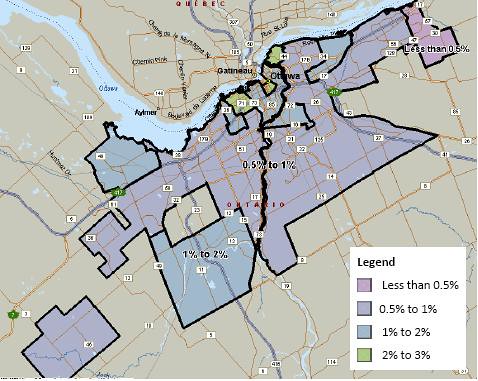
Ottawa’s neighbourhoods, Ottawa has a lower artist population for a large city, similar to Calgary
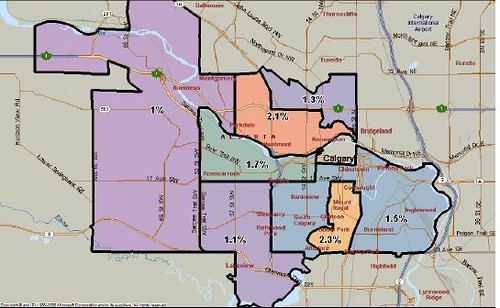
The 10 neighbourhoods with the highest concentration of artists in Calgary
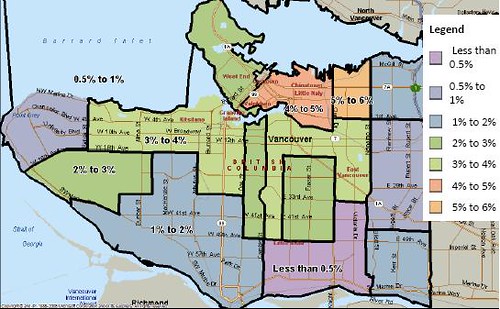
Vancouver has the most spread out artistic community,
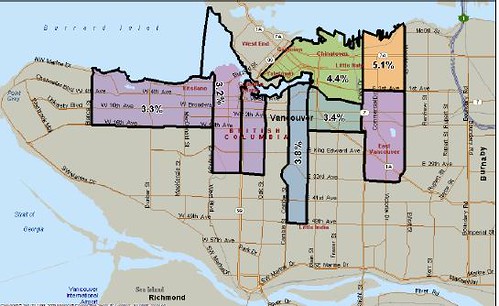
Vancouver’s 10 highest artist concentrated neighbourhoods follow the trend of being on the periphery of downtown
Photo by Pablo Pecora, maps by Hill Strategies Inc

4 comments
Any stench of Richard Florida puts me off, but this is fascinating. Would like to know exactly how ‘artist’ is defined. That said, the concentrations confirm much of my experience:
– the artist-dense areas are the most walkable and interesting parts of Toronto, Montreal and Vancouver
– the densest neighbourhoods are in the most vibrant neighbourhood in Canada: the Plateau/Mile End
– no other large cities in Canada have much density (sorry Calgary/Ottawa) and do not have extensive livable downtowns
You can find the full report from http://www.hillstrategies.com/resources_details.php?resUID=1000340
The report says that artists are defined as people who filled in the following professions on the census: actors/comedians, artisans/craftspeople, authors, conductors/composers/arrangers, dancers, musicians/singers, performers, visual artists and producers, directors or choreographers.
putting aside how “artist” is defined…
RE: economics
Obviously there are area’s of high “supply” of art, therefore would it be reasonable to expect lower prices (good deals) for the art produced and sold in these area’s?
Also how do we benchmark the value/quality of art in these area’s?